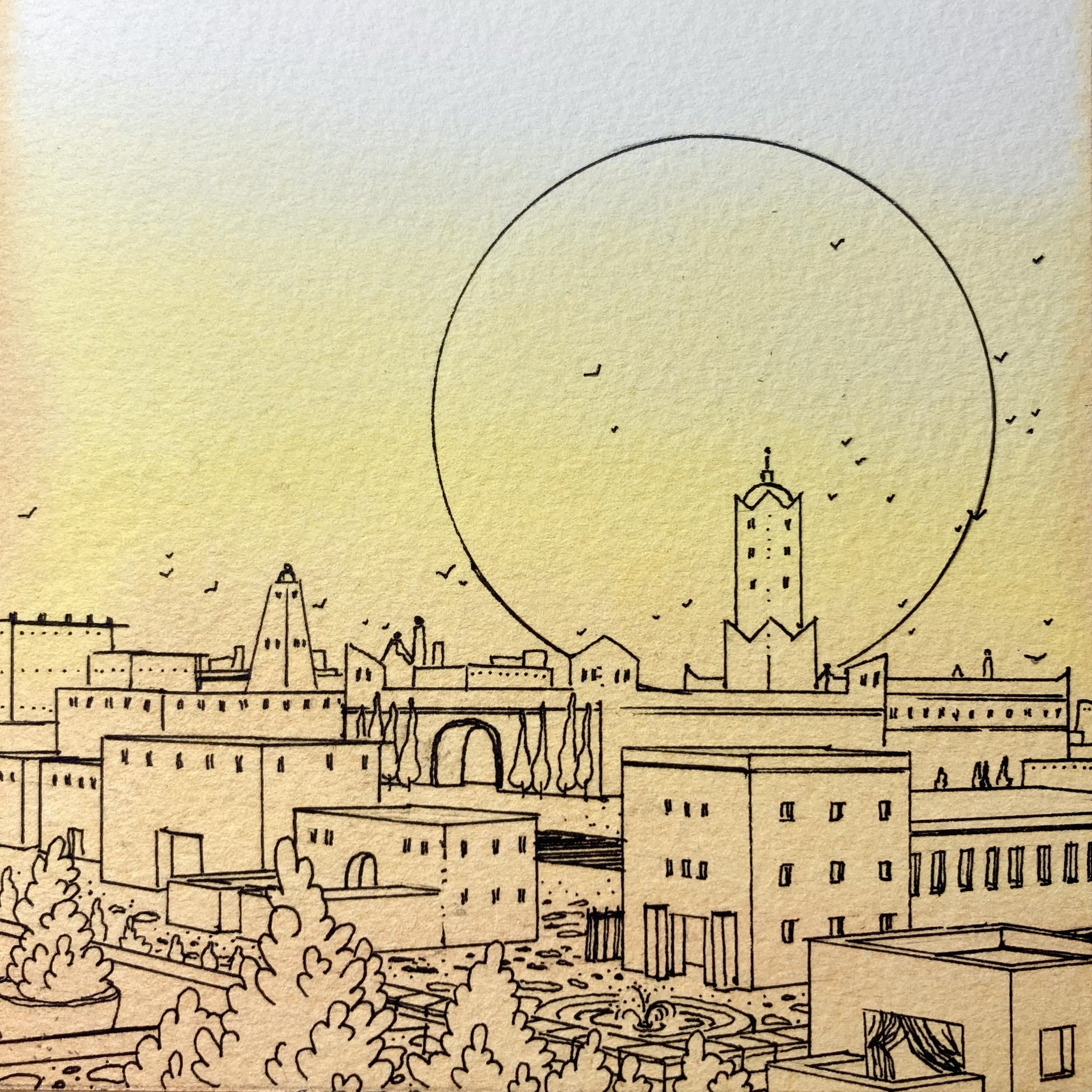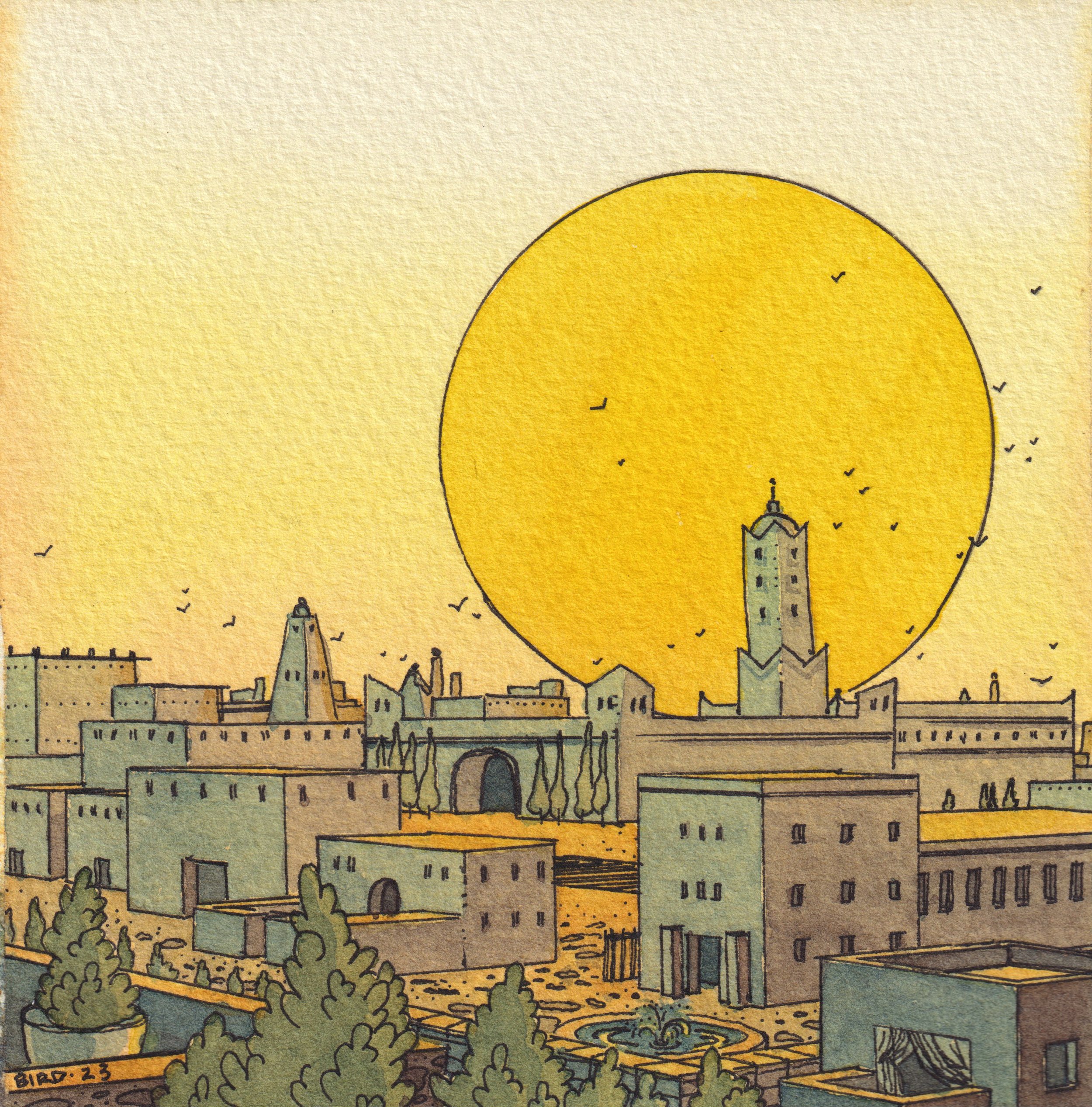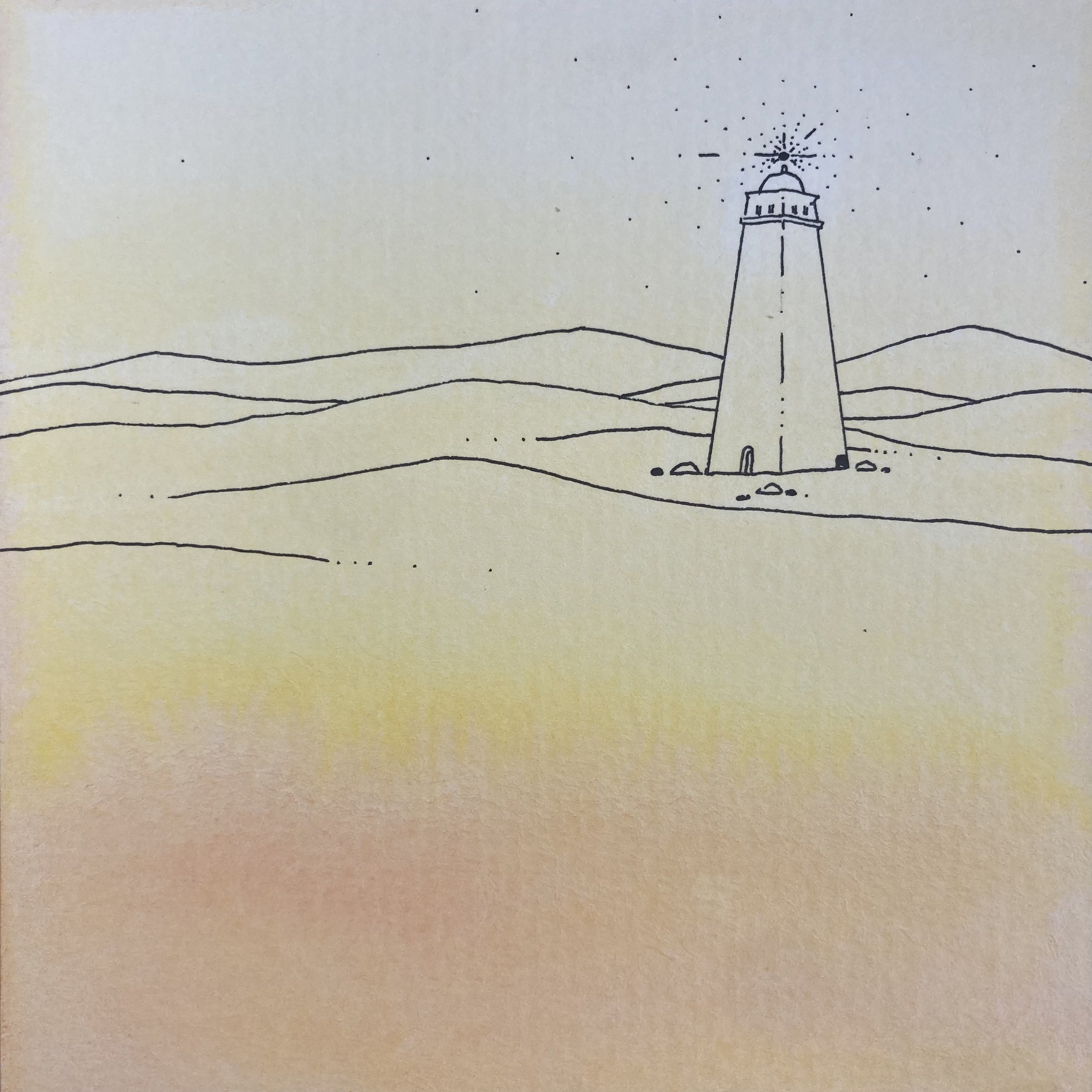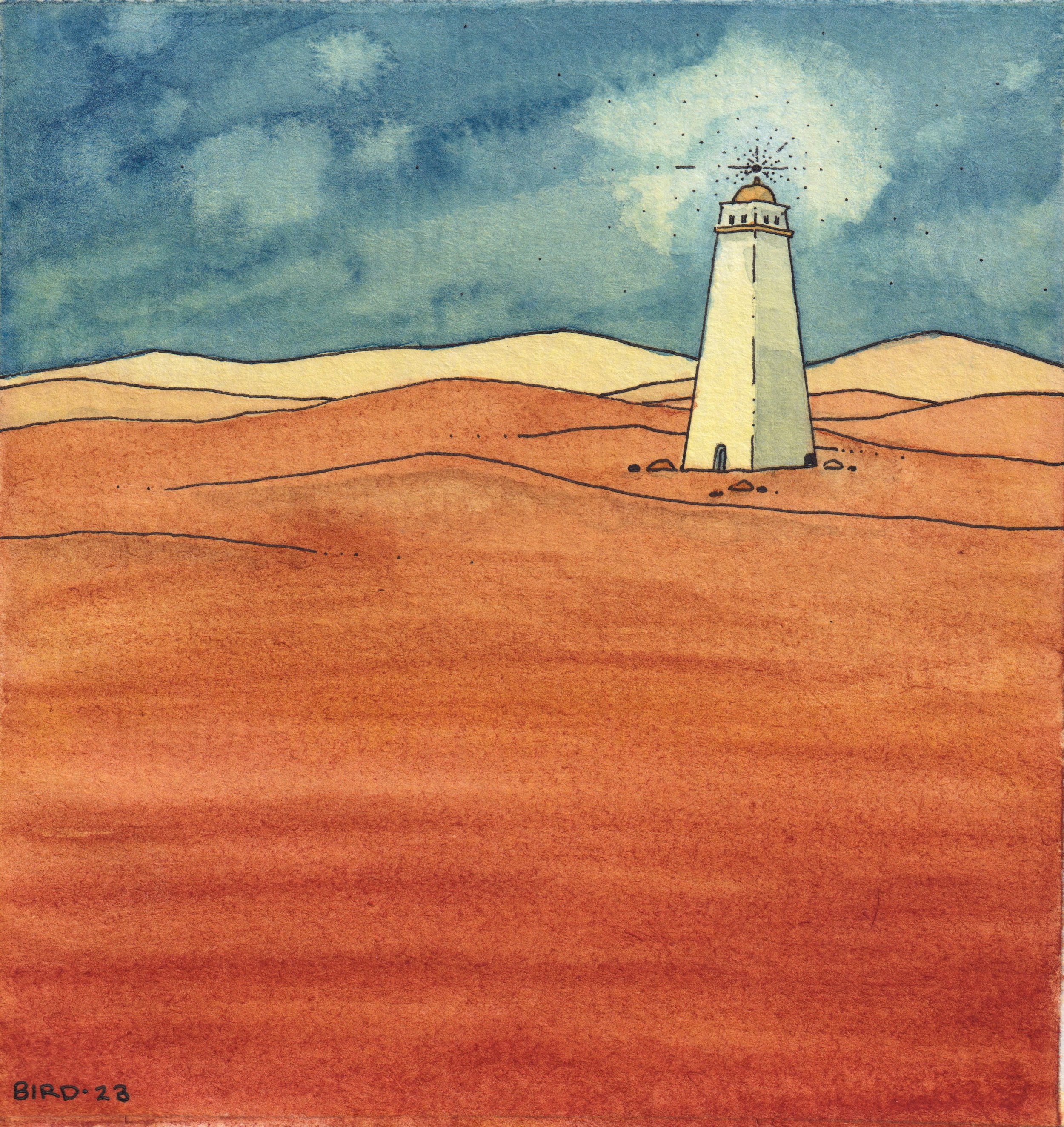I bought four different 90 pound sheets of 22 by 30 inch watercolor paper from Blick. I’m testing them to figure out which would be the best option for my upcoming graphic novel, Wild Dogs. While I was doing it, I thought I might as well do a little review.
I usually use 140 pound/300 gram weight paper (Strathmore 400 series). Generally, lightweight watercolor paper like what I’m testing is best for students, sketches before a final piece, or in more unusual, very specific circumstances—like where you need to transfer an image onto paper by using a light board—which is what I’m using the paper for. I could use a heavier weight paper, the light board can penetrate through my usual paper, but it gets difficult to see small details and I want to be able to be as detailed as possible.
The four papers I have are:
Saunders Waterford Watercolor Paper—cold press
Saunders Waterford Watercolor Paper—hot press
Canson Lightweight Watercolor Paper—cold press
Bienfang Watercolor Paper—press type not listed
All papers were stretched with water and taped down to a board with water-activated tape. They were are given the same wash at the same time. The sketches were drawn on with a .5mm Zebra M-301 mechanical pencil or number 2 Ticonderoga Black. Erasing was done with a kneadable eraser or Staedler Mars plastic eraser. For the final artwork I used the Sennelier half-pans and .35mm Koh-i-noor Rapidograph that I ordered for use on my graphic novel.
First impressions:
Saunders Waterford Watercolor Paper—cold press: Paper feels sumptuous. The tooth of the paper is a nice, even texture, very little to no repetitious mechanical pattern, almost looks like handmade paper. Feels good in the hand. Velvety. Slightly cream color, not bright white. Watermark on the bottom of the sheet, embossed mark. Four deckle edges.
Saunders Waterford Watercolor Paper—hot press: Very smooth surface. Nice tight grain, with subtle tooth. Feels nice under the fingertips, velvety. Slightly creamy color, again, not bright white. Watermark on the bottom of the sheet, embossed mark. Four deckle edges.
Canson Lightweight Watercolor Paper—cold press: Subtle tooth. Surface doesn’t have much of a mechanical pattern. Surface feels a little rough under the fingertips. Barely off-white in color, not quite bright white.
Bienfang Watercolor Paper: Not sure if this is hot or cold press. I’m guessing cold press. Has a very mechanical pattern to the tooth. Bizarre texture to the very top of the paper almost like the impression of someone writing on a page of paper above. Feels flimsy. The paper does feel very smooth, almost chalky under the hand. Just barely off-white, not bright white.
I’m not expecting great things from the Bienfang. It feels cheap. At $1.86 a sheet, it wasn’t the least expensive of the four, though. Cason’s Lightweight was, at $1.68 a sheet. Both Saunders Waterford sheets cost a hefty $5.13 each, about three times the price of the other two. I would consider that steep for a lightweight paper like this, but at first blush it seems worth the higher price tag. The paper feels better crafted.
Paper construction and background information:
Saunders Waterford: Made by St. Cuthberts Mill. It’s available in a variety of weights (from 90# up to 300#) and a variety of sizes in sheets, pads, blocks, and even rolls. The manufacturer’s website says this: “…surface is created using natural woollen felts that give it a distinctive random texture. The surface is sized in gelatine making it strong and resilient to scrubbing, and other rough treatments.” It’s made from cotton. St. Cuthberts Mill has two other lines: Bockingford—an affordable midrange paper, offered in pastel tints in addition to standard white; and Millford—a hard sized paper which is more resistant to water absorption.
Canson Lightweight Watercolor Paper: This paper is from Canson’s XL watercolor paper line. It’s offered in lightweight (90#/185g) and heavyweight (140#/300g). Only cold press available in this line. Offered in pad, sketchbook, and sheets in a variety of dimensions. Doesn’t list that it’s made from cotton, so could be a cotton-pulp blend, or more likely all pulp. Canson also carries three other lines of watercolor paper: Héritage—100% cotton, heavyweight, appears to be their response to Arches; Montval—a mid-range paper; and Graduate—lightweight, student-level paper.
Beinfang Watercolor Paper: Made by Speedball. They offer the lightweight watercolor paper (90#/146g) and a heavyweight watercolor paper (140#/228g). The lightweight watercolor paper, according to their website: “Available in 15-sheet, glue-bound pads or 25- and 100-sheet packages. This acid-free paper is offered in 9”x12 and 11”x15” pads or 18”x24” and 22”x30” sheet packages.” Doesn’t list that it’s made from cotton, so could be a cotton-pulp blend, or more likely all pulp.
Painting:
Saunders Waterford Watercolor Paper—cold press: Took the initial wash very nicely, color is decently saturated. Handled sketching and erasing well—no damage to paper or lifting of color during erasing. Radiograph tip didn’t catch or skip on surface and the ink soaked in and dried quickly. Held up easily to multiple washes and some light scrubbing. Brush bristles didn’t catch in the paper surface. Final artwork has good saturation.
Saunders Waterford Watercolor Paper—hot press: Took the initial wash well, equal in saturation to the cold press. Ink might take a little bit longer to dry, experienced some smudging. The brush glided really nicely over the smooth surface. Held up beautifully to multiple washes. Handled erasing very well, no lifting of color. Final artwork has good saturation.
Canson Lightweight Watercolor Paper—cold press: Took initial wash alright, significantly less saturated when compared to both Saunders Waterford papers. Took ink nicely. Erasing lifted color noticeably. Paint seemed to sit on top of paper, finished artwork has a dull, chalky finish.
Bienfang Watercolor Paper: Initial wash was very faint by comparison, uneven paper surface was very evident, and the structure of the paper itself created a ribbed appearance. Took sketching and ink fine. Erasing lifted color noticeably. Difficult to impossible to lift painted colors with a wet brush or scrub, paper surface damaged easily.
Final Thoughts:
All of these papers are more geared to a student level, but both Saunders Waterford papers performed above and beyond. The washes turned out beautifully saturated with nice luminosity. They both withstood erasing without pulling up paint or marring the surface and held up to working over with multiple washes. It handles like a heavier weight paper. I’m curious what St. Cuthburts Mill’s other products are like. I ultimately decided to use the cold press for my graphic novel—the colors look great, it was a dream to work with, and the texture made by the woolen felts is drool-worthy.
Frankly, I would not ever suggest the Beinfang paper for anyone for any reason. The lined texture is glaring after a wash and colors are extremely dull. For a better price, the Canson paper is a decent option for beginner painters or those on a budget. It still leaves something to be desired in the way of color vibrancy and transparency, but for the price and how easily available it is, it’s a solid choice.
All of these pieces are available as 10x10” prints in my print shop here.
My Patreon supporters in the Blue Nightshade, Sweet Pea, and Devil’s Paintbrush tiers each received one of the originals with the rest of their monthly rewards.
This review was not paid for by any of the paper manufacturers or by Dick Blick Art Materials. The prices given were accurate at time of publication.







